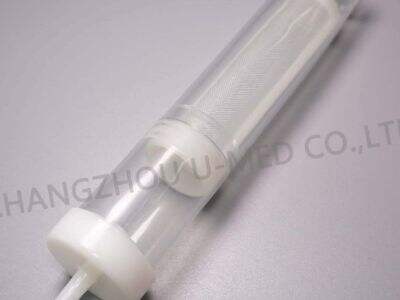The right tubing clamp is crucial for regulating fluids in medical environments. Tubing clamps are designed to control the flow of fluids through medical tubing to ensure accurate and precise delivery of medication, IV fluids, and other critical fluids.In this post, we’ll take a closer look at: The various types of tubing clamps What to consider when selecting the right type The critical nature of proper selection in medical applications The key features to look for in tubing clamps for fluid control Tips on how to ensure secure and reliable connections
Types of Tubing Clamps Explained
There are several types of these tubing clamps, and you can see them in different sizes and shapes. Two standard kinds of clamps for tubing are roller clamps and slide clamps. Three roller clamps or variants of the same (e.g., feet-clamps) are used to adjust the flow of fluid by pinching the tubing against a number of rollers and a flat surface. Slide clamps, in contrast, function by moving a plastic or metal piece along the tubing, opening or closing the flow.
Things to Consider When Selecting Tubing Clamps
How to Choose the Right Tubing Clamp for Medical Fluid Control There are many considerations to take into account when selecting the correct tubing clamp for medical fluid control. While there is quite a number of reasons why this may be, one of such factors is the type of clamp. It is important to choose a clip made from strong and sterile materials for the safety of patients. The size of the tubing is another consideration. Various clamps come into play with different tubing sizes, so the clamp you choose needs to reflect the size of the tubing that you are using.
The significance of selecting the right tubing clamp for medical applications
In medical applications, proper tubing clamp selection is particularly important to make a correct and precise delivery of fluids to the patient. Poor choice of clamps or inferior quality clamps can cause leakage, contamination or other serious problems which would endanger the patient. Selecting the correct tubing clamp is critical in order to ensure the fluid delivery system is secure and can not pose any risks to patients.
Features You Should Consider When Shopping for Tube Clamps for Fluid Management
When choosing a tubing clamp for fluid regulation in medical device applications, there are many important features to consider. One important feature is adjustability. A proper tubing clamp must enable the flow rate to be set as required for the individual patient. Another important aspect is that they have a good secure way to lock into place and do not accidentally come open while in use. You'll also want tubes clamps that are easy to clean and disinfect for sterile environments.
How to Ensure a Safe, Secure, Reliable Tubing Clamp Connection
Proper installation is necessary to assure a tight and secure tubing clamp connection. Before joining the tubing clamp, check it for damage or wear. Make sure when mounting the clamp to the tubing that it is centered and tight to avoid any leakage and accidental openings. It's also a good idea to periodically inspect the clamp while in use to ensure it's still firm and in place.
In summary, appropriate tubing clamp choice is important in medical fluid control to assure that safety and system integrity are not compromised. By knowing the various clamps, looking for important points and searching out important features, the caregiver helps to make a secure and dependable connection for his or her patient. Below are the instructions for how to efficiently adjust the flow of fluids and appropriately and safely administer medications and other essential fluids to the patient. Using U MED's tubing clamps, medical staff can use this effective, reliable product for fluid control and be confident of quality.
Table of Contents
- Types of Tubing Clamps Explained
- Things to Consider When Selecting Tubing Clamps
- The significance of selecting the right tubing clamp for medical applications
- Features You Should Consider When Shopping for Tube Clamps for Fluid Management
- How to Ensure a Safe, Secure, Reliable Tubing Clamp Connection

 EN
EN
 AR
AR BG
BG HR
HR CS
CS DA
DA NL
NL FI
FI FR
FR DE
DE EL
EL HI
HI IT
IT JA
JA KO
KO NO
NO PL
PL PT
PT RO
RO RU
RU ES
ES SV
SV TL
TL ID
ID LT
LT UK
UK VI
VI HU
HU TH
TH TR
TR AF
AF MS
MS GA
GA HY
HY BN
BN LO
LO LA
LA NE
NE KK
KK